Mobile apps are becoming the backbone of healthcare digital transformation as the healthcare sector is advancing toward a future with optimal patient care, agility, and accessibility. Despite upwards of 350,000 health apps available for download worldwide, just 110 apps are responsible for nearly 50% of total downloads (Healthcare Transformers), making for a competitive yet high-impact segment. Healthcare applications are changing the way medical services are offered, from telemedicine platforms to AI-driven diagnostics.
However, pursuing healthcare app development is costly. Based on the type of app, its functionalities, regulations, integration of advanced technologies such as AI and other additional features, the cost can vary substantially. For both new healthcare startups and well-established providers, the significance of these cost drivers is necessary for the accurate budgeting of services.
In this guide, we’ll cover the significant factors impacting healthcare app development costs, how to shape your budget, and how to develop a competitive product and save money along the way. Let’s dive in!
Factors Affecting The Cost Of Healthcare App Development
The price of healthcare application development ranges significantly depending on requirements, obligations, and target audiences. The average cost of a mid-range healthcare app is between $50,000 and $150,000, while more advanced solutions, such as AI-driven diagnosis or remote patient monitoring can go up to $300,000. The costs vary by the audience, feature, and regulations.
Here are the key cost-driving factors:
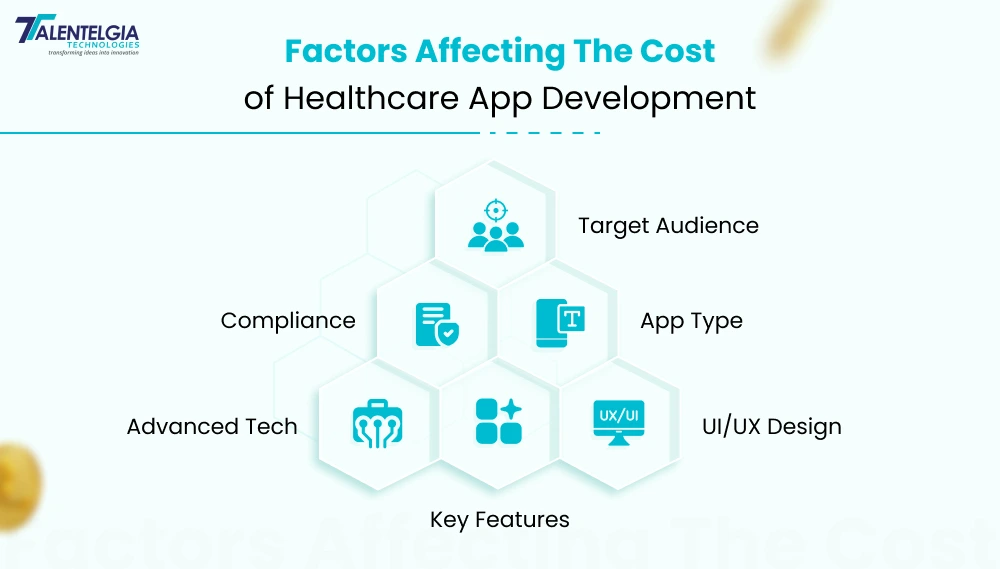
1. Target Audience
Your target user base significantly impacts the mHealth app development. Are you developing your application for medical professionals or patients? The audience determines the functionality, security, and compliance requirements.
Healthcare Apps For Medical Professionals
Healthcare apps for professionals are trained to optimize medical workflows and further assist doctors and nurses in providing seamless patient care. These applications are required to follow HIPAA laws and use strong encryption to protect sensitive patient information.
- Clinical Bedside Assistance: Helps physicians diagnose diseases, analyze whether the information provided by the patient is accurate, or seek advice from colleagues.
- Remote Patient Monitoring: Allows medical staff to monitor the health of a patient and provide telehealth consultations.
- Securely stores patient medical history, prescriptions, appointments, and reports.
- Billing & Invoicing Automation: This means simplifying financial processes so businesses can execute transactions with ease.
Medical Healthcare Apps For Patients
From the patient’s perspective, healthcare applications enable personal health assistance that includes features that promote better medical outcomes and healthier lifestyles.
Basic features of patient health apps:
- Doctor Search & Appointments: Users can find patients and book, reschedule, or cancel appointments seamlessly.
- Health Data Tracking & Notifications: This tracks vital signs and symptoms and sends info to doctors in case of any major health changes.
- Symptom Analysis & Initial Diagnosis: AI-powered preliminary diagnostics based on the presented symptoms.
- Mental health service provider: Provides you with therapy sessions, mindfulness exercises, and emotional well-being resources.
Due to the rapid advancement of mHealth technology, mHealthcare applications are changing the way medical workers interact with patients and enabling worldwide healthcare solutions to be more timely, productive, and available.
2. Type Of Healthcare App
While creating a healthcare application, you should distinguish mHealth apps intended for medical needs from fitness or wellness software. Medical applications deal with sensitive patient information and have to follow regional healthcare regulations, unlike general health and wellness apps.
- E-prescription Medical Apps
- Overview:These apps let healthcare providers create, renew, and manage prescriptions digitally in adherence to the regulations in their locality. In some areas, they even let users message pharmacists and schedule prescription pickups.
- Example: ScriptSure – A digital prescribing system that integrates with the medication database and allows for prescription printing, when needed, securely.
- Development Cost: The cost of developing an ePrescription app typically falls between $35,000 and $70,000, depending on factors such as feature set, app size, and overall complexity.
- Telehealth Solutions
- Overview:Telehealth apps offer online healthcare services and allow providers to have mobile and web virtual patient consultations through secure platforms. However, they can also work alongside EHR systems, billing modules, in-app video conferencing, and e-prescription tools.
- Example: Amwell — A telehealth platform that is HIPAA-compliant, providing on-demand consultations, primary care, and mental health services, with more than 2,000 medical facilities subscribed
- Development Cost: The cost of developing a telemedicine app typically ranges between $35,000 and $90,000, depending on the features designed for patient-doctor interactions and the overall app complexity.
- Remote Patient Monitoring (RPM) Apps
- Overview: These apps use IoT-enabled sensors and wearable devices to collect patient health data outside the clinical wall. Doctors can monitor vitals remotely, track chronic conditions, and get alerted to sudden health deterioration.
- For example, MedM – A unified device-agnostic platform supporting over 600 medical sensors integrated with Google Fit and Apple Health.
- Development Cost: The cost of building a comprehensive and feature-packed remote patient monitoring software ranges from $50,000 to $400,000+, depending on functionality, scalability, and system complexity.
- Symptom Checker Apps
- Overview: These AI apps allow users to enter symptoms and receive potential diagnoses, as well as recommendations for local medical facilities or at-home treatments.
- For example, Ada – A top symptom checker app that is clinically validated for accuracy and has a database that covers more than 1,500 medical conditions.
- Development Cost: A symptom checker app costs around $40,000, ranging from $30,000 to $50,000, based on features and complexity.
- Professional Medical Diagnosis Software
- Overview: Patient-focused symptom checkers vs medical apps for diagnosis. These solutions derive insights from patient data gathered from IoT sensors, EHRs, or medical imaging to derive an AI-driven diagnosis and enable professionals to collaborate.
- Example: AI-based diagnostic systems that help a doctor recognize a medical condition from the insights generated based on data.
- Development Cost: The cost of developing professional medical diagnosis software typically falls between $30,000 and $300,000+, depending on features and system complexity.
In case you need a brief outlook on the pricing factors, we have compiled the information in a table format.Here’s a combined table merging both sets of data for a more structured view:
| Healthcare App Type | Description | Key Features | Development Cost Range |
|---|---|---|---|
| Database App / EHRs | Enhances healthcare services with predictive analytics. | Demographic insights, admin data, health records. | $30,000 – $50,000 |
| Medical Networking App | Connects healthcare professionals for collaboration. | Forum, news, journals, networking, case studies. | $30,000 – $60,000 |
| Billing App | Manages medical bills and transactions. | Custom billing, automation, audits, and credit billing. | $40,000 – $90,000 |
| E-prescription (eRx) App | Enables digital prescription sharing with pharmacies. | Drug database, patient reports, custom interfaces. | $35,000 – $70,000 |
| Telemedicine App | Supports remote consultations between doctors & patients. | Video calls, secure chat, appointment booking, eRx. | $35,000 – $90,000 |
| Remote Patient Monitoring (RPM) | Monitors patient vitals remotely using IoT devices. | Health tracking, real-time alerts, doctor access. | $50,000 – $400,000+ |
| Symptom Checker Apps | AI-powered symptom analysis for self-diagnosis. | Symptom input, AI diagnostics, recommendations. | $30,000 – $50,000 |
| Medical Diagnosis Software | AI-driven diagnostics for professionals. | IoT integration, imaging analysis, predictive insights. | $30,000 – $300,000+ |
| Fitness & Wellness App | Tracks activity, nutrition, and workouts. | Step tracking, diet plans, and wearables integration. | $30,000 – $70,000 |
| Mental Health App | Supports emotional well-being and therapy access. | Mood tracking, meditation, and therapist access. | $40,000 – $100,000 |
| Chronic Disease Management App | Helps manage long-term conditions with monitoring tools. | Symptom tracking, medication reminders, lifestyle tips. | $50,000 – $100,000 |
3. Features You Want To Deploy
The features of the healthcare application you choose to develop significantly influence the user experience and development costs. Basic functions are essential for maintaining operational continuity, while advanced features help to differentiate your app in response to the particular needs of patients and providers.
We’ll dive into a few of the basic and advanced features, plus the estimated development costs, below.
- User Profile & Secure Login
Both patients and healthcare providers need an easy-to-use registration and login system. The doctors’ profiles may also have qualifications, experience, and credentials for patient reference, and let patients fill out health history forms for better preparation for the appointment.
Must-have elements:
- MFA for HIPAA compliance
- Password recovery through email or SMS
- Patient and medical professional role-based access
Estimated Cost: Starting at $15,000, mostly due to strict data protection requirements.
- Notifications & Reminders
Timely reminders improve user engagement by informing the users about:
- Future or cancelled appointments
- Lab test results availability
- Medication time and follow-up
Best practice: Notifications must always be useful and not disturbing.
Estimated Cost: $3,000–$5,000 if a well-integrated alert system is in place.
- Community & Support Forums
A built-in community for peer support and professional networking. Patients can discuss experiences, while health care providers can review cases and find expert advice.
Implementation options:
- Existing forum integration ($800–$2,000)
- Customized interactive platform ($10,000–$15,000)
Estimated Cost: Dependent on the depth of integration
- Geolocation Services
Geolocation promotes patient safety and convenience through:
- Nearby hospital and pharmacy search
- Real-time visibility in the ambulance (emergency services tracking for a quick response)
Estimated Cost: Starting at $5,000, depending on real-time tracking capabilities.
| Feature | Development Cost Range |
|---|---|
| User Profile & Secure Login | Starting at $15,000 |
| Notifications & Reminders | $3,000 – $5,000 |
| Community & Support Forums | $800 – $15,000 |
| Geolocation Services | Starting at $5,000 |
4. Innovative Technologies
Tech integrations in healthcare improve functionality, patient outcomes, and competitiveness in the mobile healthcare market. But with these advancements come extra development costs. Here, we explain the top disruptive AI, AR, and IoT technologies transforming the healthcare sector.
| Technology | Use Case | Basic Features | Development Cost Range |
|---|---|---|---|
| AI in mHealth | Mental Health Support | AI chatbots, mood tracking, and therapeutic suggestions | $40,000 – $120,000 |
| Augmented Reality (AR) in mHealth | Medical Training & Education | 3D anatomical models, interactive simulations | $30,000 – $300,000+ |
| IoT in Healthcare | Remote Patient Monitoring | Wearable health sensors, real-time data sharing, alerts | $50,000 – $300,000+ |
| IoT in Healthcare | Mood Detection Wearables | Physiological tracking, emotion recognition | $40,000 – $150,000 |
| IoT in Healthcare | Smart Medication Storage | Temperature monitoring, real-time alerts | $40,000 – $150,000 |
5. Compliance & Certifications
Developing a healthcare application requires strict adherence to regulatory compliance standards, ensuring patient data privacy, security, and legal protection. Compliance is non-negotiable, as failure to meet regulatory requirements can lead to heavy fines, legal action, and reputational damage. Healthcare apps dealing with patient data must comply with regulations. Compliance checks, legal fees, and security audits can increase costs by $5,000 to $15,000.
Understanding the compliance landscape from the start can save costs and prevent legal issues down the line. Here’s what you need to know about regulatory requirements and their impact on health app development costs.
- United States
- HIPAA(Health Insurance Portability and Accountability Act): Ensures the privacy and security of patient data gathered by digital health apps.
- FD&C Act (Federal Food, Drug, and Cosmetic Act): Legislation governing software that falls into the medical device category.
- FTC Act & Health Breach Notification Rule: Establishes a framework for personal health data breaches as well as the commercial use of personal health data.
- Non-compliance fines: If you violate HIPAA, you are looking at fines of $50,000 or more per violation and $250,000 or more for selling your health data illegally.
- United Kingdom
- UK-GDPR & NHS Data Standards: These standards are similar to the GDPR but contain compliance guidelines specifically tailored to the handling of patient data within the NHS system.
- Australia
- My Health Records Act & Privacy Act: Enforces strict data security and storage policies for digital health applications.
6. UX/UI Design
A well-organized user experience design, user interface design (UI/UX) is the basis of any healthcare mobile app and significantly affects user engagement, satisfaction, and accessibility. The cost of UI/UX design varies depending on the design complexity, the number of screens, market research, customization requirements, and responsiveness. Design costs can range from $5,000 to $15,000, depending on complexity and visual appeal.
Just remember that a simple, minimalist user interface is inexpensive, while a complicated UI with a lot of animations and customized elements will cost you more. Making use of usability testing, A/B testing, and accessibility compliance helps ensure that the app caters to users with different needs and is easy to understand and operate across devices.
Strategies To Reduce The Cost Of Healthcare App Development
Healthcare mobile apps can be extremely expensive to build, but this does not mean that you cannot optimize the expenditure invested in them without sacrificing quality. It enables you to fast-track the development process, address potential issues in advance, and deliver a top-notch product that meets the evolving needs of users. Let’s start with how you can reduce healthcare app development costs without compromising its functionality or efficiency.
1. Conduct Market Research and User Needs Analysis
Jumping into development without proper research can lead to wasted resources. A thorough market analysis and user research help identify pain points, validate your app idea, and ensure it aligns with user expectations. Understanding what features are essential and what can be avoided prevents unnecessary expenses and accelerates time-to-market. A well-researched strategy eliminates costly mid-development changes and ensures you invest in features that truly enhance user experience.
2. Use Agile Development Methodology
Agile methodology makes the process highly adaptive and cost-efficient. With Agile’s gradual approach, real-time changes can be made, greatly minimizing costly last-minute changes. Developing, testing, and iterating in smaller cycles (sprints) allows you to keep track of resources as well as optimize the app’s functionality and UX. This greatly minimizes the chance of expensive reworks, leading to a faster rollout of a robust, consumer-friendly app.
3. Building an MVP (Minimum Viable Product)
Rather than creating the initial application in full, place significance on creating the minimum viable product (MVP)—a simplified version constructed with core features. In general, launching an MVP lets you verify your app in the market, get actual user feedback, and polish features depending on the real need. In this way, you avoid wasting your money on features you may not need and instead spend your budget on features that provide value.
4. Outsource Development to Experts
An in-house development team can be costly, especially in regions where app developers cost an average of $143,000 per year, like the U.S. One cost-effective alternative is onboarding a worthy healthcare technology partner for the development process. It allows unlocking a global talent pool while reducing all overhead and providing scalable resources according to project needs. Experienced healthcare developers know and abide by industry regulations and do not compromise on quality that can stand the test of time without going over their budget.
Conclusion
Creating a healthcare mobile app is a constantly evolving and intricate procedure that demands thorough preparation, tactical planning, and compliance with sector regulations. When you hear of the sum, it might sound too much, but in the long run, the number of benefits coming from a well-planned and fully functional healthcare app will overshadow the initial costs. With the right technologies, they focus on the right features and development processes, bringing innovative digital health solutions that ultimately improve patient care, optimize operations, and enhance healthcare access. If done right, this data can significantly improve new healthcare technologies, not only for increased functionality and compliance but also for cost effectiveness, enabling the development of a product capable of growing in line with the demands of healthcare providers and patients alike.


 Healthcare App Development Services
Healthcare App Development Services
 Real Estate Web Development Services
Real Estate Web Development Services
 E-Commerce App Development Services
E-Commerce App Development Services E-Commerce Web Development Services
E-Commerce Web Development Services Blockchain E-commerce Development Company
Blockchain E-commerce Development Company
 Fintech App Development Services
Fintech App Development Services Fintech Web Development
Fintech Web Development Blockchain Fintech Development Company
Blockchain Fintech Development Company
 E-Learning App Development Services
E-Learning App Development Services
 Restaurant App Development Company
Restaurant App Development Company
 Mobile Game Development Company
Mobile Game Development Company
 Travel App Development Company
Travel App Development Company
 Automotive Web Design
Automotive Web Design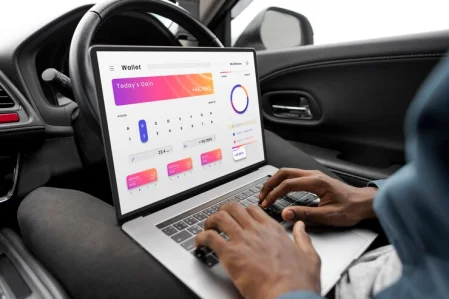
 AI Traffic Management System
AI Traffic Management System
 AI Inventory Management Software
AI Inventory Management Software
 AI Software Development
AI Software Development  AI Development Company
AI Development Company  AI App Development Services
AI App Development Services  ChatGPT integration services
ChatGPT integration services  AI Integration Services
AI Integration Services  Generative AI Development Services
Generative AI Development Services  Natural Language Processing Company
Natural Language Processing Company Machine Learning Development
Machine Learning Development  Machine learning consulting services
Machine learning consulting services  Blockchain Development
Blockchain Development  Blockchain Software Development
Blockchain Software Development  Smart Contract Development Company
Smart Contract Development Company  NFT Marketplace Development Services
NFT Marketplace Development Services  Asset Tokenization Company
Asset Tokenization Company DeFi Wallet Development Company
DeFi Wallet Development Company Mobile App Development
Mobile App Development  IOS App Development
IOS App Development  Android App Development
Android App Development  Cross-Platform App Development
Cross-Platform App Development  Augmented Reality (AR) App Development
Augmented Reality (AR) App Development  Virtual Reality (VR) App Development
Virtual Reality (VR) App Development  Web App Development
Web App Development  SaaS App Development
SaaS App Development Flutter
Flutter  React Native
React Native  Swift (IOS)
Swift (IOS)  Kotlin (Android)
Kotlin (Android)  Mean Stack Development
Mean Stack Development  AngularJS Development
AngularJS Development  MongoDB Development
MongoDB Development  Nodejs Development
Nodejs Development  Database Development
Database Development Ruby on Rails Development
Ruby on Rails Development Expressjs Development
Expressjs Development  Full Stack Development
Full Stack Development  Web Development Services
Web Development Services  Laravel Development
Laravel Development  LAMP Development
LAMP Development  Custom PHP Development
Custom PHP Development  .Net Development
.Net Development  User Experience Design Services
User Experience Design Services  User Interface Design Services
User Interface Design Services  Automated Testing
Automated Testing  Manual Testing
Manual Testing  Digital Marketing Services
Digital Marketing Services 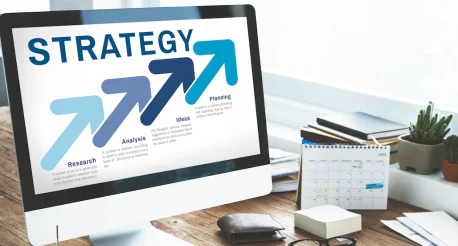
 Ride-Sharing And Taxi Services
Ride-Sharing And Taxi Services Food Delivery Services
Food Delivery Services Grocery Delivery Services
Grocery Delivery Services Transportation And Logistics
Transportation And Logistics Car Wash App
Car Wash App Home Services App
Home Services App ERP Development Services
ERP Development Services CMS Development Services
CMS Development Services LMS Development
LMS Development CRM Development
CRM Development DevOps Development Services
DevOps Development Services AI Business Solutions
AI Business Solutions AI Cloud Solutions
AI Cloud Solutions AI Chatbot Development
AI Chatbot Development API Development
API Development Blockchain Product Development
Blockchain Product Development Cryptocurrency Wallet Development
Cryptocurrency Wallet Development About Talentelgia
About Talentelgia  Our Team
Our Team  Our Culture
Our Culture 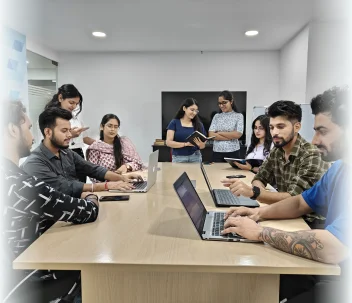
 Healthcare App Development Services
Healthcare App Development Services Real Estate Web Development Services
Real Estate Web Development Services E-Commerce App Development Services
E-Commerce App Development Services E-Commerce Web Development Services
E-Commerce Web Development Services Blockchain E-commerce
Development Company
Blockchain E-commerce
Development Company Fintech App Development Services
Fintech App Development Services Finance Web Development
Finance Web Development Blockchain Fintech
Development Company
Blockchain Fintech
Development Company E-Learning App Development Services
E-Learning App Development Services Restaurant App Development Company
Restaurant App Development Company Mobile Game Development Company
Mobile Game Development Company Travel App Development Company
Travel App Development Company Automotive Web Design
Automotive Web Design AI Traffic Management System
AI Traffic Management System AI Inventory Management Software
AI Inventory Management Software AI Software Development
AI Software Development AI Development Company
AI Development Company ChatGPT integration services
ChatGPT integration services AI Integration Services
AI Integration Services Machine Learning Development
Machine Learning Development Machine learning consulting services
Machine learning consulting services Blockchain Development
Blockchain Development Blockchain Software Development
Blockchain Software Development Smart contract development company
Smart contract development company NFT marketplace development services
NFT marketplace development services IOS App Development
IOS App Development Android App Development
Android App Development Cross-Platform App Development
Cross-Platform App Development Augmented Reality (AR) App
Development
Augmented Reality (AR) App
Development Virtual Reality (VR) App Development
Virtual Reality (VR) App Development Web App Development
Web App Development Flutter
Flutter React
Native
React
Native Swift
(IOS)
Swift
(IOS) Kotlin (Android)
Kotlin (Android) MEAN Stack Development
MEAN Stack Development AngularJS Development
AngularJS Development MongoDB Development
MongoDB Development Nodejs Development
Nodejs Development Database development services
Database development services Ruby on Rails Development services
Ruby on Rails Development services Expressjs Development
Expressjs Development Full Stack Development
Full Stack Development Web Development Services
Web Development Services Laravel Development
Laravel Development LAMP
Development
LAMP
Development Custom PHP Development
Custom PHP Development User Experience Design Services
User Experience Design Services User Interface Design Services
User Interface Design Services Automated Testing
Automated Testing Manual
Testing
Manual
Testing About Talentelgia
About Talentelgia Our Team
Our Team Our Culture
Our Culture
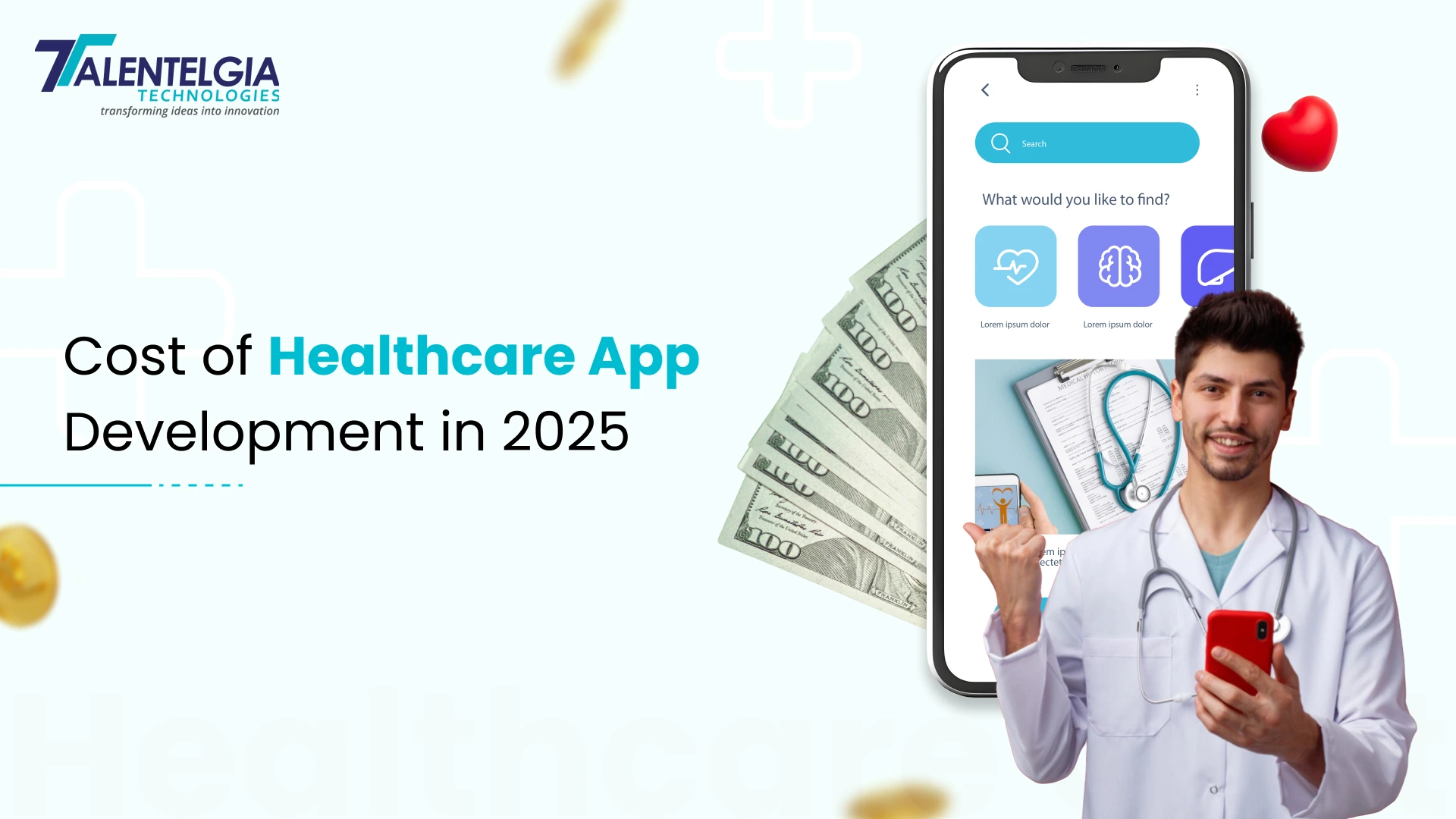

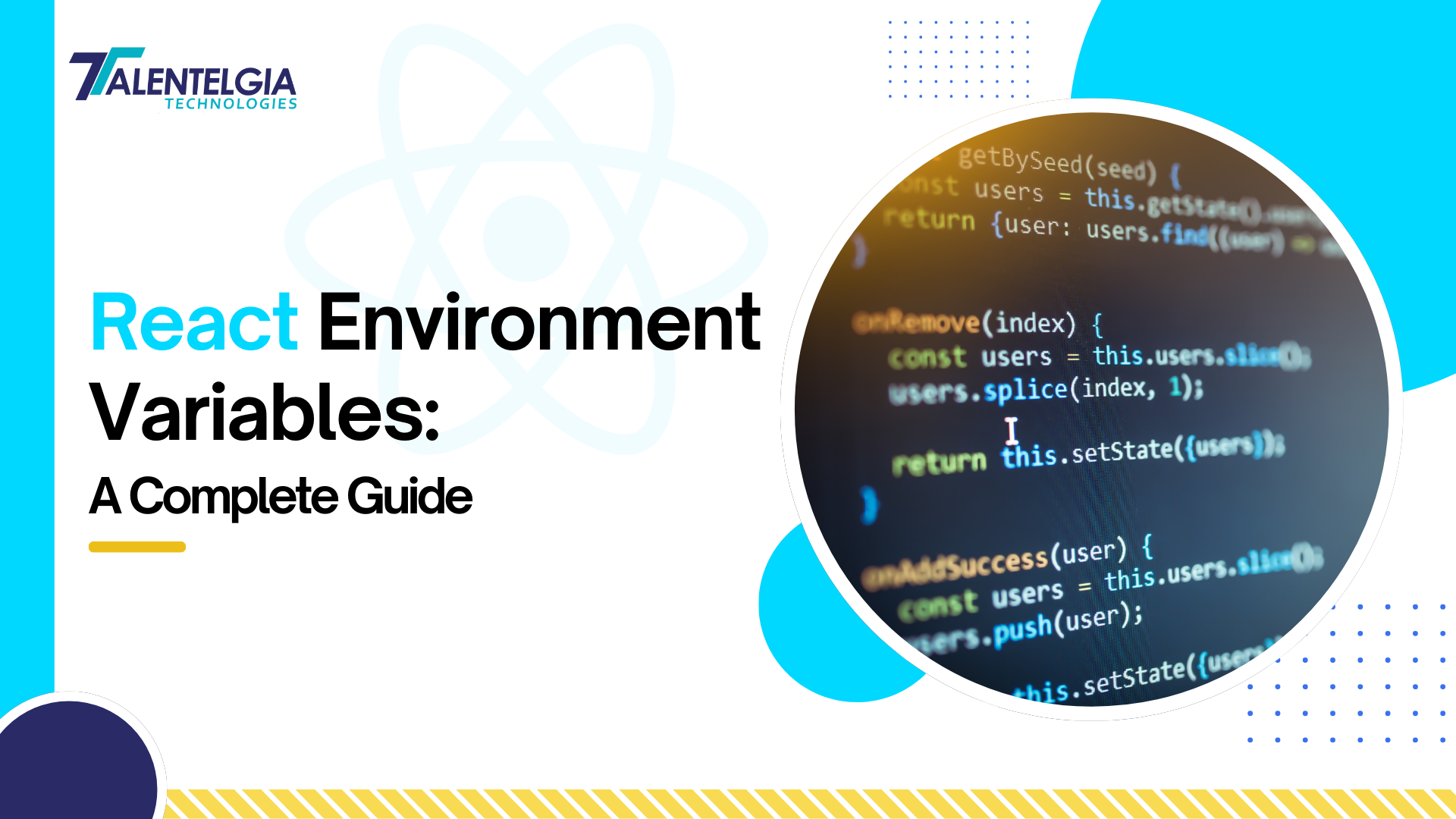

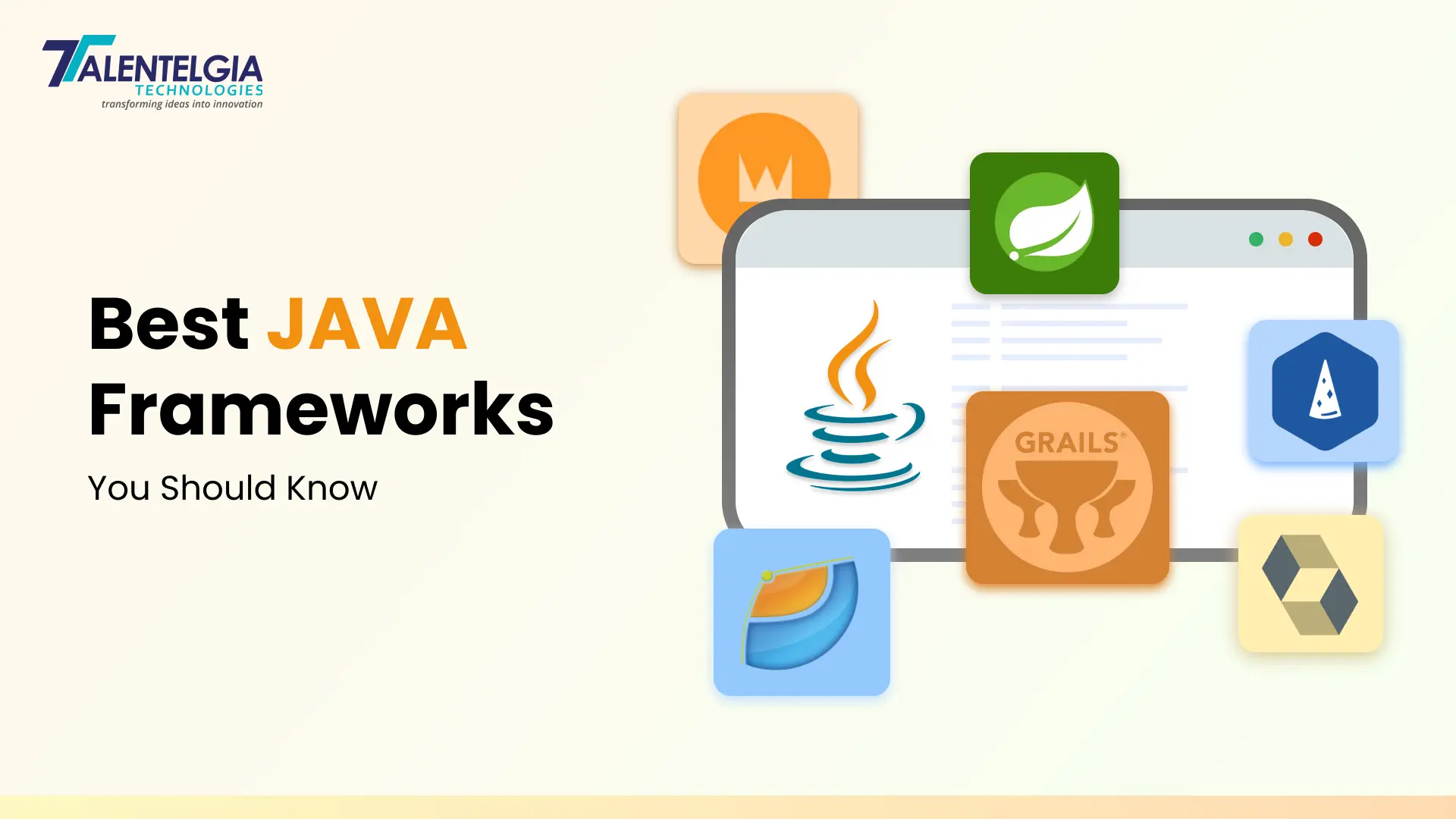
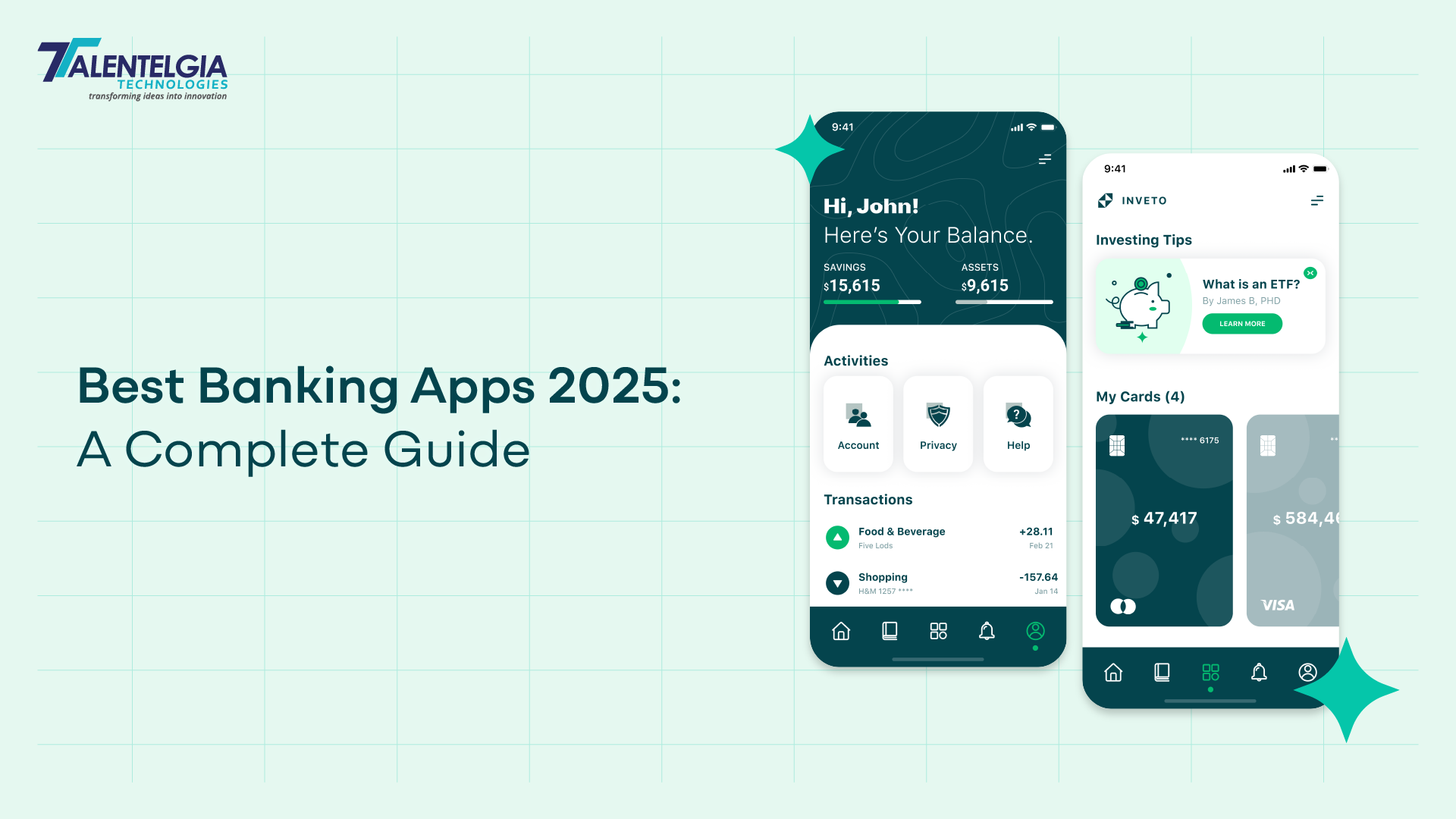










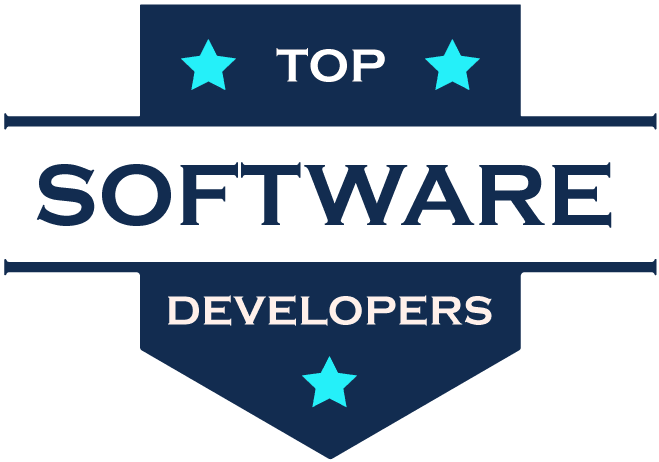
 Write us on:
Write us on:  Business queries:
Business queries:  HR:
HR: 




